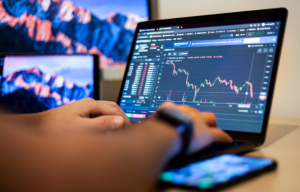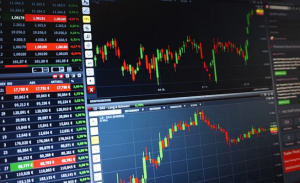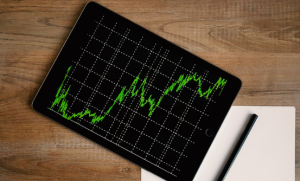Table of Contents
Trading Income Allowance is a policy introduced in the UK in the 2017-2018 taxation year. It is beneficial, especially for those who have multiple sources of income and those who indulge in small scale trading. The allowance provided by the UK government is termed as “Trading Income Allowance.” Let’s have a deeper insight into it.
What is Trading Income Allowance?

Introduced in the tax year 2017/18 in the UK, popularly known as a trading allowance, it exempts some people from paying taxes.
Like if you’re into trading or you have a side business or multiple income sources, like you’re self-employed and have an income of less than £1,00 per annum (tax year), then you don’t have to pay taxes.
Like even if you have income less than £1,000 from sources like tutoring, teaching, skilled gigs, which can be developed more with time, then you don’t need to pay taxes for the given tax year. You can focus more on expanding your business. If you’re into any freelance give then, it will be helpful to you.
However, you will not be exempted directly for it, and you have to claim it in certain cases like:
- If you use cash-based accounting
- You use accuracy based accounting, but you can use the cash basis of accounting.
You are eligible for a trading allowance even if you have paid a part of it in the given tax year. As for the trading year 2021/22, if you have paid earlier, still you’re eligible to claim for the complete tax year.
What if you have a Trading Income of Less than £1,000?

If you’ve earned less than £1,000 or less during the tax year, then you don’t have to pay any tax as it will be included in the trading income allowance. You can call it Full relief. It is obvious for you to have the capability to analyse your total income from your business/gig account’s statement.
Suppose you have sold some handicrafts for £300 in the whole year and hired some apparatus to assist you worth £100; your net worth here is £400. Since it lies within £1,000, you have the opportunity to use £400 as your business rate. If your trading income allowances at more than your trading income, still you would not incur a loss.
Suppose if you don’t have a gig/side business rather, it is your primary source of income/business yielding less than £1,000, and then you do not have to claim for allowance officially. You are not required to get your firm/employment registered for a Self Assessment Tax Return. However, if you have already registered to file tax returns, then you can contact HM Revenue and Customs and do some enquiry whether you need to pay taxes or not.
In some cases, you have to register a business even if you are not applicable. Like if you want to pay the Voluntary Class 2 Insurance Contributions. You might be doing so to be eligible for benefits like state pension, maternity allowance or if you wish to avail of tax-free childcare business services.
If you want to avail the benefits of the Self Employment Income Support Scheme, even then, you have to file Self-Assessment Tax Returns. In such a case, you are eligible for filing Tax Returns even if your income is eligible for trading income allowance.
You should also consider your SEISS grant funds received as it is also a taxable income. It is following the self-employed NIC (National Insurance Contributions). When you check the tax-return page, you will see a distinct blank for SEISS grants for the self-employed tax returns.
You have to maintain records of your trading expenditure and income to analyse whether you are eligible for a trading allowance or not. It will help you to get a clear picture of whether you want to avail of a trading income allowance or not.
What to do if Trading Income surpasses £1,000?

If your total income is more than £1,000 without any deductions in a given financial year, then rather than deducting your business expenses during the taxation year, you can exclude your trading allowance instead.
Example:- If your total trading income (before deducting expenses) on the basis of the tax year is more than £1,000; then you can choose to deduct the trading allowance from your trading income. To make your taxable profits less than the trading allowance, you can use the advanced approach. For instance, if John earns £1,700 by selling cosmetics in the tax year 2021/22, and wants to claim a trading income allowance, his taxable profits from the income will be £700.
It is a preferred option to claim trading allowance by the aforementioned method, also known as Partial Relief. However, you should avail it only if you have to spend too much related to your occupation.
Moreover, you will be exempted to prepare business accountants for taxation uses. Like if you have your own online school and earn £1,400 in the taxation year. You will also have certain expenses like £100. So, here you can claim a trading allowance worth £1000 instead of £100. However, you don’t have an option to choose both. Like here, your taxable income will be £400.
Suppose you are contending for partial relief, so you are not eligible to claim tax relief funds or any pre-trading expenditures from the government. However, it is advised to maintain proper business statements as you may need them for better financial and process management and track your income well. It is useful to analyse your expenditure well before filing for any allowances.
The Conclusion
Our guide on Trading Income Allowance in the UK explains the tax rules and detailed info on how to prepare accounts. In a nutshell, we have tried to cover how trading allowance works and you can also learn more about trading allowances in New Spy a leading trading platform in the UK.
There is a lot of technical guidance in HMRC’s on gov.uk. If you have any queries regarding the Trading Income Allowance in UK, do let us know in the comment box. Also, let us know if we forget to add any important information regarding Trading Allowance.


